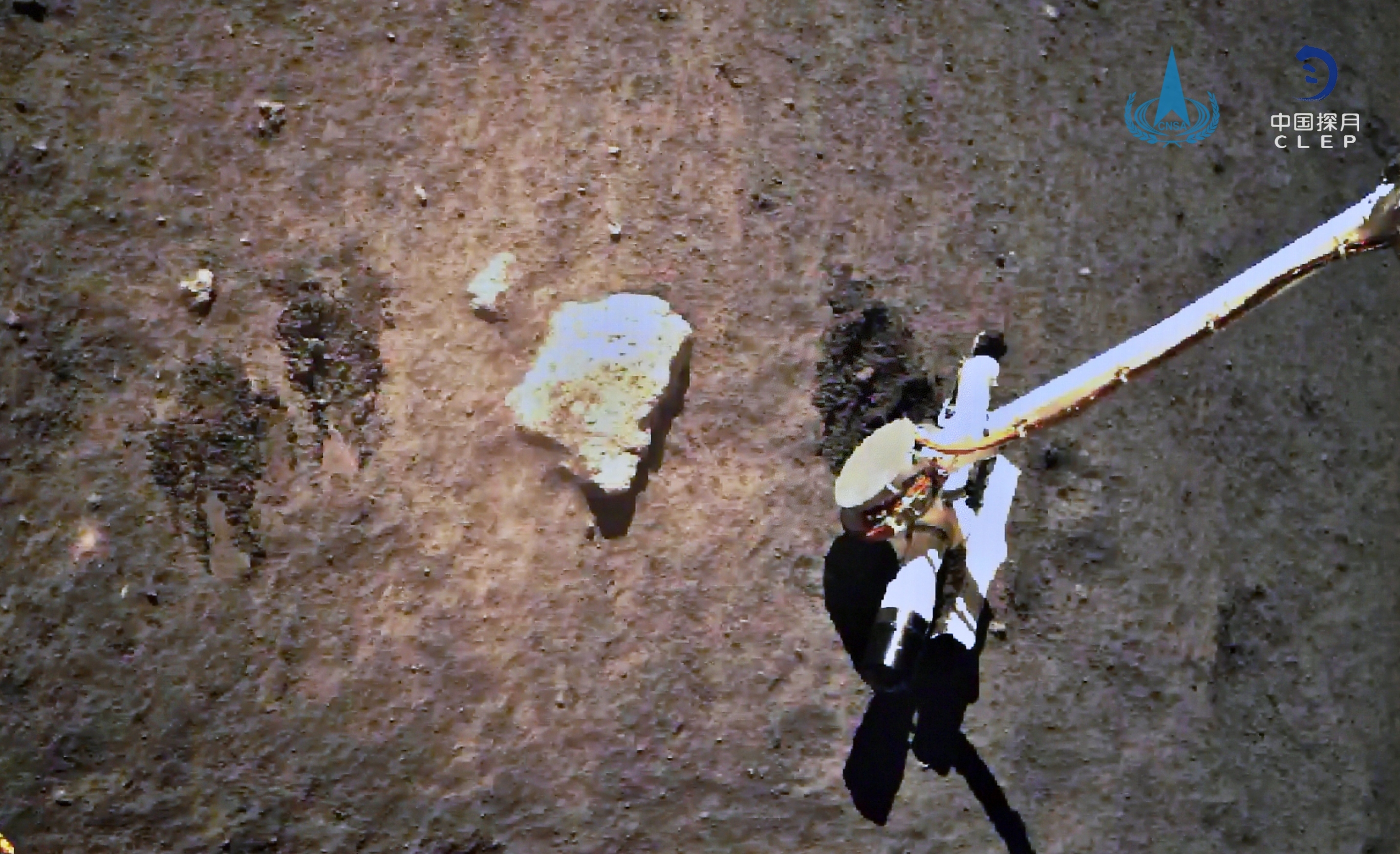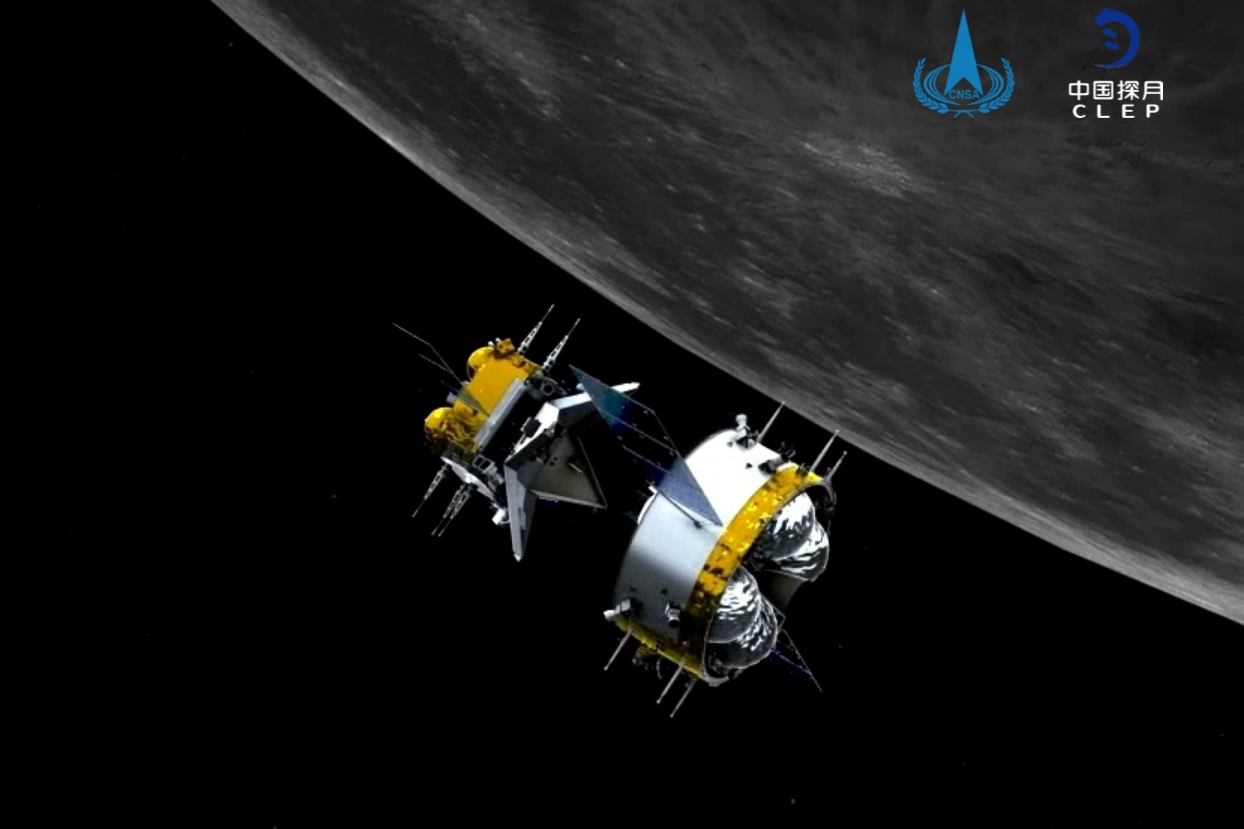Complex Chang'e-5 mission on track to benefit China's spaceflight roadmap and int'l collaboration
- By Richard de Grijs
 0 Comment(s)
0 Comment(s) Print
Print E-mail China.org.cn, December 7, 2020
E-mail China.org.cn, December 7, 2020

You would be forgiven for thinking that the Moon no longer holds any secrets, after all, man has studied our closest natural companion since antiquity.
You would also be wrong. That's because in late October two international teams revealed clear evidence of the presence of significant water reservoirs on the Moon.
Although this discovery immediately led to wishful thinking of possible human supply chains and a permanent human presence on the Moon, mining lunar water will present a major engineering challenge as the water droplets appear to be encased inside glassy beads.
Moreover, exploration of the nearby solar system has become a renewed focal point among a number of international science teams. At the time of writing, the Japanese Hayabusa 2 asteroid sample return mission is expected to land in the South Australian outback in just a few hours.
The spacecraft is expected to carry tens of grams of material from the asteroid Ryugu, a remnant of the planet formation process in the early solar system. Scientists hope that by studying water-bearing minerals in the returned samples they will be able to fill in gaps in our knowledge of our solar system's formation history.
China's Chang'e-5 lunar sample return mission has clearly come at a fortuitous time, despite the mission incurring a three-year delay because of engine problems encountered by the Long March 5 Y2 heavy-lift rocket in 2017. These issues pushed back the China National Space Agency's (CNSA) roadmap for robotic and, eventual, human lunar exploration.
Following the example of landing Chang'e-4 on the far side of the Moon in early January 2019, China has chosen to embark on a careful approach to reach and achieve well-defined spaceflight milestones.
The Chang'e-5 mission, in turn, is a test of numerous complex technical procedures that will ultimately benefit human exploration missions to the Moon and beyond.
The spacecraft is the third Chinese mission to have landed on the Moon and the first to return back to Earth, representing a new step in a series of increasingly complex missions.
The spacecraft included a lander, an ascender, an orbiter, and a returner. The former two portions jointly reached the lunar surface before the ascender returned to the orbiter-returner pair.

Operation of each of these components carries risks, and so this mission functions as a test of key technologies that human explorers may eventually need if the Chinese decide to establish a permanent lunar base. Zhang Kejian, head of China's National Space Administration, has announced that the aim is to launch a crewed lunar mission by 2029.
Chang'e-5 landed close to Mons Rümker, a 1,300-meter-high volcanic complex in the northern region of the unexplored Oceanus Procellarum (the "Ocean of Storms") – vast, dark lava plains on the Moon's near side visible from Earth.
Rocks from this area are thought to be a few billion years younger than the 382 kilograms collected by Apollo astronauts and so the Chang'e-5 mission could address an important gap in our understanding of the Moon's more recent volcanic activity.
Lunar material brought back to Earth by U.S. and Soviet lunar missions suggests that the Moon was volcanically active some 3.5 billion years ago and then fizzled out. However, recent observations of the Moon's surface imply that the Moon may have been volcanically active up to one or 2 billion years ago. Question remains as to how a rather small rocky body could produce heat.
By the time the spacecraft returns to Inner Mongolia in mid-December, it will have been 44 years since the last successful lunar sample return mission: the Soviet Union's Luna 24.
Despite this long gap in missions, access to Moon rock samples is still routinely requested by lunar and planetary scientists around the world. Therefore, researchers will be keen to get their hands on some of the approximately 2 kilograms of lunar material collected by the Chinese craft.
Thomas Zurbuchen, NASA's science mission chief, congratulated the CNSA, tweeting, "When the samples collected on the Moon are returned to Earth, we hope everyone will benefit from being able to study this precious cargo that could advance the international science community."
Despite U.S. government policies preventing NASA scientists from collaborating with their Chinese counterparts, China's foreign ministry spokeswoman, Hua Chunying, referred to the mission as "a historic step in China's cooperation with the international community in the peaceful use of outer space. China will continue to promote international cooperation and the exploration and use of outer space in the spirit of working for the benefit of all mankind."
Indeed, the mission received technical and operational support from the European Space Agency, so it's likely that a sample and data-sharing arrangement will be reached between Chinese and European scientists.
This arrangement can only be a positive step for scientific progress and improved mutual understanding. Science as a discipline transcends artificial national borders and hence scientific collaboration serves as a unifying force, irrespective of national politics.
Science is a human endeavor that benefits from the open sharing of diverse opinions, backgrounds, and expertise. As such, this is a great opportunity for China to demonstrate to the international community its commitment to advancing humankind.
Richard de Grijs is a Dutch professor of astrophysics and Associate Dean at Macquarie University in Sydney.
Opinion articles reflect the views of their authors, not necessarily those of China.org.cn.
If you would like to contribute, please contact us at opinion@china.org.cn.





